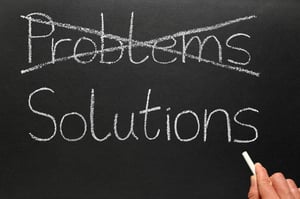 The best way to implement and sustain improvement within an organization is to practice daily Kaizen. This means capturing and executing opportunities to improve every day of the week and every week of the year. It also means empowering the entire organization from the C-suite to the front line to contribute to positive change.
The best way to implement and sustain improvement within an organization is to practice daily Kaizen. This means capturing and executing opportunities to improve every day of the week and every week of the year. It also means empowering the entire organization from the C-suite to the front line to contribute to positive change.
Kaizen events may seem antithetical to this approach, but they actually make a great companion to daily improvement. While holding a Kaizen event once or twice a year without the underlying culture and daily focus on improvement is unlikely to result in lasting change, using them in the right situations can give your business results a boost and accelerate your improvement journey.
Here are a few examples of when Kaizen events are very effective and impactful.
A problem is acute and time is of the essence
Sometimes businesses run into a drop-everything-and-fix-it-now kind of problem. When that is the case, a Kaizen event can come to the rescue. Because participants work exclusively on the matter at hand during the three to five days of the event, the full attention of your best resources will be focused on the problem. They can pull out all the stops and involve the right people to get the situation resolved with haste.
The upside potential is significant
Even if a problem isn’t as pressing as the one described above, if there is reason to believe that there are significant cost savings or revenue increases to be had, a Kaizen event may be in order. When you address this type of problem, be sure to have mechanisms in place to document the current state and calculate the impact of the improvements implemented during your event.
You’re stuck
Some problems persist despite well-meaning efforts to resolve them. Look for issues that multiple improvement attempts have failed to resolve. They might be ripe for a Kaizen event in which the root causes will be sought out, many potential solutions will be explored, and measures for success will be defined.
The problem spans multiple functional areas
One of the reasons that cross-functional collaboration is so hard is that everyone is juggling competing priorities. People are often willing to help out other departments, but not to the detriment of their own work. That’s why Kaizen events are great for problems that require teams to work together. Because other work is put aside for the duration, everyone is rowing in the same direction and working toward the same goals.
It’s time for some practice
The skills required for a successful Kaizen event are like most other skills, if you don’t use them from time to time you lose them. The business impact of the Kaizen event is important, of course, but so is the opportunity to grow the skills of your team. You might give someone the chance to be the event leader for the first time, or show new employees how events unfold.
Kaizen events are an excellent option for these types of problems. Use them in conjunction with daily continuous improvement to tackle your biggest challenges, hone the skills of your team, and strengthen relationships across departments.



Add a Comment